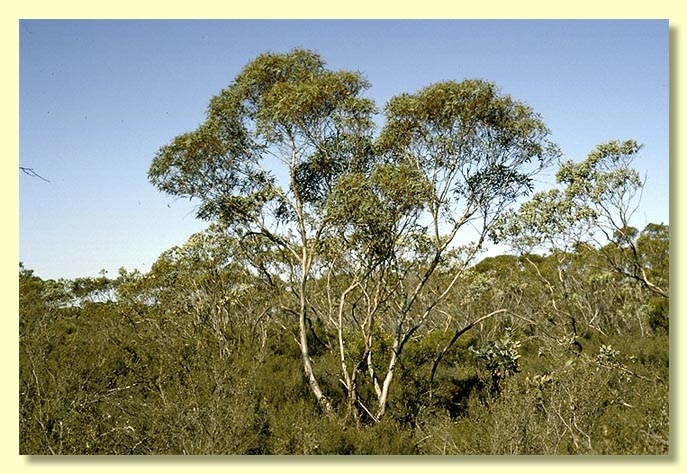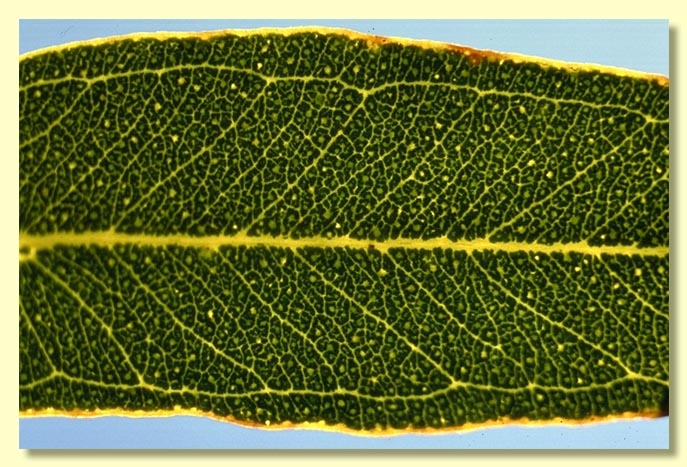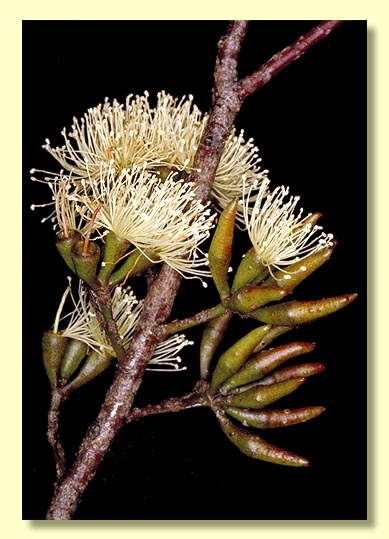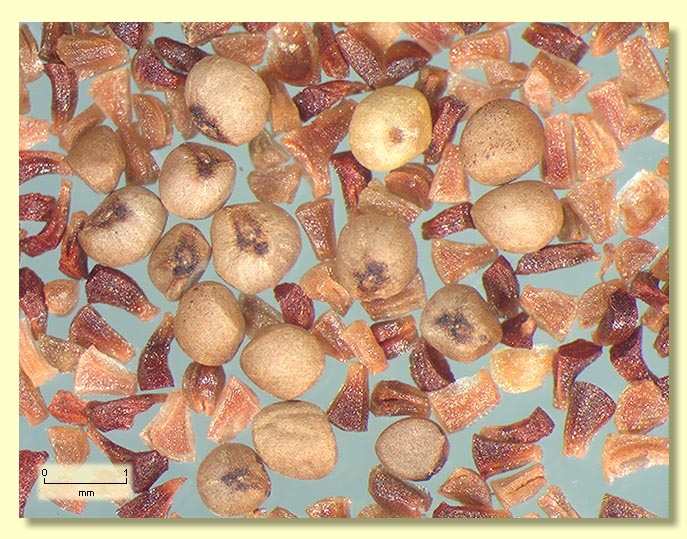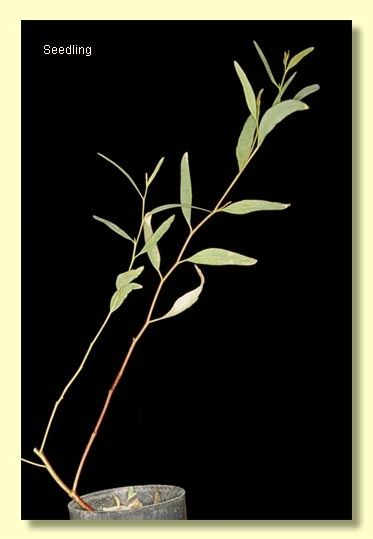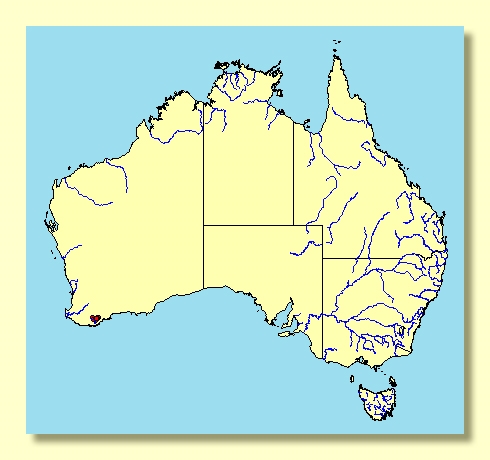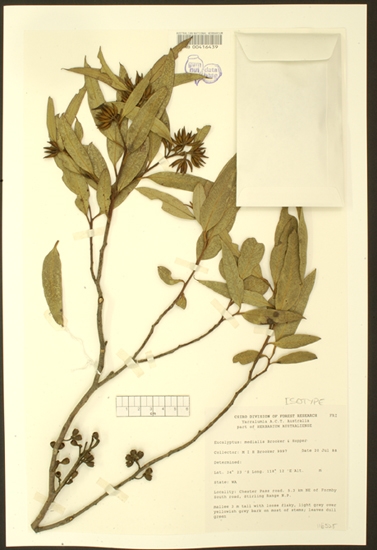Eucalyptus | Symphyomyrtus | Bisectae | Glandulosae | Levispermae | Cubiformes
Euclid - Online edition
Eucalyptus medialis
Bark rough, loose, flaky, grey over yellowish on basal part of trunk, otherwise smooth, dark and light grey over pale orange to bronze.
Branchlets have oil glands in the pith, or pith sometimes non-glandular.
Juvenile growth (coppice or field seedlings to 50 cm): not seen.
Adult leaves held erect, alternate, petioles 0.6–1.5 cm; blade lanceolate, 5.2–8.8 cm long, 0.9–2.2 cm wide, base tapering to petiole, margin entire, apex pointed, concolorous, dull, bluish green to green, becoming glossy green inside crown, side-veins greater than 45° to midrib, reticulation moderate to dense, intramarginal vein remote from margin, oil glands island and intersectional.
Inflorescence axillary unbranched, peduncles widening apically, 0.8–1.7 cm long, buds 11 to 15, pedicellate (pedicels 0.2–0.5 cm long). Mature buds fusiform and sometimes curved (1–1.5 cm long, 0.25–0.35 cm wide), scar present, operculum narrowly conical, rarely, about twice as long as hypanthium and about equal to it in width at the join or slightly narrower, few outer stamens erect, most stamens variably deflexed, anthers oblong, versatile, dorsifixed, dehiscing by longitudinal slits, style long and straight, stigma blunt to tapered, locules 3 or 4, the placentae each with 4 vertical rows of ovules. Flowers creamy white.
Fruit pedicellate (pedicels 0.2 cm long), usually cylindrical to barrel-shaped, 0.6–0.8 cm long, 0.4–0.6 cm wide, disc descending vertically, valves 3 or 4, near rim level or tips scarcely exserted.
Seeds straw-coloured, 0.8–1.2 mm long, sub-spherical, surface smooth, hilum ventral/terminal.
Cultivated seedlings (measured at node 10): cotyledons Y-shaped (bisected); stems rounded in cross-section; leaves shortly petiolate, opposite for ca 3 or 4 nodes then alternate, lanceolate, 4.5–7 cm long, 0.9–2.2 cm wide, dull, green.
Flowering has been recorded in March and September.
A small mallee endemic to Western Australia, restricted to low slopes and plains of the Stirling Range on sandy soils. The bark is rough and flaky at the base and the adult leaves are dull green.
Eucalyptus medialis belongs to Eucalyptus subgenus Symphyomyrtus section Bisectae subsection Glandulosae because the cotyledons are bisected, buds have an operculum scar and the branchlets usually have oil glands in the pith. Within this subsection E. medialis is one of a group of 14 species that form series Levispermae subseries Cubiformes, characterised by having smooth almost cuboid to sub-spherical seed (not spherical), flattened peduncles that widen apically and buds that are narrowly fusiform with some stamens erect and others variably deflexed.
E. medialis is most likely to be confused with E. xanthonema subsp. apposita, a smooth-barked mallee with slightly narrower leaves that is also restricted to the Stirling Range area. Further south-east in the Corackerup Creek to Boxwood Hill area is another related species, E. melanophitra. This is a mallet occurring on breakaways and has some blackish rough bark on the butt but is otherwise similar to E. medialis.

